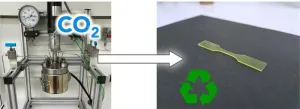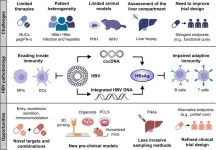(Press-News.org) A model based on artificial intelligence is able to predict the therapy outcome (measured by volumetric reduction of tumor lesions) in 80% of ovarian cancer patients. The AI-based model has an accuracy of 80%, significantly better than current clinical methods. The tool, named IRON (Integrated Radiogenomics for Ovarian Neoadjuvant therapy), analyzes various patient clinical features, from circulating tumor DNA in the blood (liquid biopsy) to general characteristics (age, health status, etc.), tumor markers, and disease images obtained through CT scans. Based on this analysis, it provides a prediction of the therapy's likelihood of success.
This achievement stems from a recent study published in Nature Communications, conducted on 134 high-grade ovarian cancer patients. The study was coordinated by Professor Evis Sala, Chair of Diagnostic Imaging and Radiotherapy at the Faculty of Medicine and Surgery of the Catholic University and Director of the Advanced Radiology Center at the Policlinico Universitario A. Gemelli IRCCS. The AI model was initially developed by the team of professor Sala at the University of Cambridge.
Background:
Ovarian cancer affects over five thousand women annually in Italy, adding to the thirty thousand patients who have already received a diagnosis. Due to its lack of specific early symptoms, diagnosis often occurs in advanced stages of disease. High-grade serous ovarian carcinoma, constituting 70-80% of ovarian tumors, is particularly aggressive and frequently resistant to chemotherapy. Currently, therapy response prediction for this type of tumor is only 50% accurate.
Additionally, there are few clinically useful biomarkers for this type of cancer due to its high heterogeneity, varying significantly from patient to patient. This led to the development of an artificial intelligence-based tool capable of accurately predicting chemotherapy responders.
The Study:
"We compiled two independent datasets with a total of 134 patients (92 cases in the first dataset, 42 in the second independent test set)," Professor Sala and Dr. Mireia Crispin Ortuzar from Cambridge explained. For all patients clinicians collected clinical data, including demographic information and treatment details, as well as blood biomarkers like CA-125 and circulating tumor DNA (ctDNA). Quantitative characteristics of the tumor derived from CT scan images of all primary and metastatic tumor sites were also obtained.
Omental and pelvic/ovarian locations (common for ovarian cancer spread) represented the majority of disease burden initially. Omental deposits showed a significantly better response to neoadjuvant therapy compared to pelvic disease. Tumor mutations (e.g., TP53 MAF assessed on circulating DNA) and the marker CA-125 were correlated with overall disease burden before treatment and therapy response.
Furthermore, advanced analysis of CT scan images revealed six patient subgroups with distinct biological and clinical characteristics, indicative of therapy response. All these tumor features were used as input data for artificial intelligence algorithms that collectively form the tool. The developed model was then trained and its effectiveness validated on an independent patient sample.
"From a clinical perspective, the proposed framework addresses the unmet need to early identify patients unlikely to respond to neoadjuvant therapy and may be directed to immediate surgical intervention," Professor Sala emphasized. "The tool could be applied to stratify the risk of each individual patient in future clinical research conducted at Policlinico Gemelli in collaboration with Professor Giovanni Scambia's team, Chair of Gynecology and Obstetrics at the Faculty of Medicine and Surgery of the Catholic University and Scientific Director of the Policlinico Universitario Agostino Gemelli IRCCS Foundation," professor Sala concludes
END
Ovarian cancer: Artificial intelligence predicts therapy responses
Results from a study published in the journal Nature Communications, co-designed and co-supervised by Prof. Evis Sala from the Catholic University at Rome, and Policlinico A. Gemelli IRCCS.
2023-11-13
ELSE PRESS RELEASES FROM THIS DATE:
American Heart Association honors Gladstone President Deepak Srivastava with Distinguished Scientist Award
2023-11-13
Deepak Srivastava, MD, president of Gladstone Institutes and a renowned cardiovascular researcher, took the stage on Saturday in Philadelphia to receive the American Heart Association’s Distinguished Scientist award—joining a preeminent group of scientists and clinicians who’ve earned the association’s highest honor over the past decade.
The American Heart Association applauded Srivastava for his significant, original, and sustained scientific contributions that have advanced the association’s mission: “To be a relentless ...
Second-most distant galaxy discovered using James Webb Space Telescope
2023-11-13
The second- and fourth-most distant galaxies ever observed have been discovered in a region of space known as Pandora’s Cluster, or Abell 2744, using data from NASA’s James Webb Space Telescope (JWST). Following up on a deep field image of the area, an international team led by Penn State researchers confirmed the distance of these ancient galaxies and inferred their properties using new spectroscopic data — information about light emitted across the electromagnetic spectrum — from JWST. At nearly 33 billion light years away, these incredibly distant ...
Researchers explore origins of lupus, find reason for condition’s prevalence among women
2023-11-13
For years, researchers and clinicians have known that lupus, an autoimmune condition, occurs in women at a rate nine times higher than in men. Some of the factors that cause the disease’s high prevalence in women have eluded discovery, but in a new study investigating the immune system processes in lupus and the X chromosome, Johns Hopkins Medicine researchers have uncovered answers about the disease’s frequency in females.
A number of dysregulated genetic and biological pathways contribute to the development of lupus and its varied symptoms of muscle and joint pain, ...
Capture or reuse CO2 as a chemical source for the production of sustainable plastics
2023-11-13
A scientific team has developed a new polyurethane production technique using CO2 to create new types of easily recyclable plastics. The study, published in the Journal of the American Chemistry Society (J.A.C.S.), could provide a solution for the development of truly sustainable plastics.
Commodity plastics have transformed global industry. Whether in construction, clothing, vehicles or food packaging, these plastics are everywhere in our daily lives, so much so that their global use has been estimated at around 460 million tons in 2019. This number is staggering, but not surprising, because plastics, also known as synthetic polymers, have met a large ...
Self-deception may seed ‘hubris balancing,’ leading to Putin’s war against Ukraine
2023-11-13
Strategy underlies the affairs of national leaders, including how they view and interact with other states — but what if such strategy is borne of self-deception? That’s the thrust of a novel international relations theory that Ryuta Ito of Hiroshima University has now expanded upon, providing psychological rationalization to explain the irrational acts of national leaders at war.
Ito penned his reasoning on Sept. 5 in the journal International Affairs.
“Why did Vladimir Putin decide to invade Ukraine in 2022?” asked Ito, assistant professor in the Graduate School of Humanities and Social Sciences at Hiroshima University. ...
Appropriate statin prescriptions increase sixfold with automated referrals
2023-11-13
PHILADELPHIA— The odds of prescribing the appropriate dose of statins—a medicine used to lower “bad” cholesterol levels—increased sixfold when automated referrals were made to pharmacy services, instead of relying on traditional prescribing methods, according to researchers at the Perelman School of Medicine at the University of Pennsylvania. More than 90 million people in the U.S. use statins, making it one of the most prescribed medications in the county. Despite their effectiveness in lowering cholesterol levels and the risk of cardiovascular ...
When keeping secrets could brighten your day
2023-11-13
Though people often want to share good news as soon as they learn it, a study published by the American Psychological Association has found that keeping good news a secret before telling someone else could make people feel more energized and alive.
“Decades of research on secrecy suggest it is bad for our well-being, but this work has only examined keeping secrets that have negative implications for our lives. Is secrecy inherently bad for our well-being or do the negative effects of secrecy tend to stem from keeping negative secrets?” asked lead author Michael ...
It takes a village: Hunter-gatherer approach to childcare suggests that the key to mother and child wellbeing may be many caregivers
2023-11-13
Infants and toddlers may be psychologically wired to thrive with high levels of “sensitive care” and personal attention, according to a study conducted with contemporary hunter-gatherer societies.
Research led by an evolutionary anthropologist at Cambridge University found that hunter-gatherer infants receive attentive care and physical contact for about nine hours per day from up to 15 different caregivers.
Dr Nikhil Chaudhary says that, for the vast majority of our species’ evolutionary history, ...
The American Pediatric Society announces its new members for 2023
2023-11-13
The American Pediatric Society (APS) is pleased to announce eighty-four new members. Founded in 1888, the APS is North America's first and most prestigious academic pediatric organization. New members will be recognized during the APS Presidential Plenary at the Pediatric Academic Societies 2024 Meeting.
APS members are recognized child health leaders of extraordinary achievement who work together to shape the future of academic pediatrics. Current members nominate new members by recognizing individuals who have distinguished themselves as child health leaders, ...
Reviewing new challenges and opportunities for hepatitis B cures
2023-11-13
Hepatitis B virus (HBV) is a significant public health problem, with over 296 million people chronically infected worldwide. Despite the availability of a safe and effective vaccine for over 40 years, HBV remains a leading cause of liver disease and death.
One of the main challenges to curing HBV is the unique biology of the virus. HBV replicates through a covalently closed circular DNA (cccDNA) intermediate integrated into the host genome. This makes it very difficult to eradicate the virus completely, even with effective antiviral therapy. Another challenge is the impaired immune response to HBV in chronically infected individuals. The virus has evolved several mechanisms to evade ...
LAST 30 PRESS RELEASES:
Injectable breast ‘implant’ offers alternative to traditional surgeries
Neuroscientists devise formulas to measure multilingualism
New prostate cancer trial seeks to reduce toxicity without sacrificing efficacy
Geometry shapes life
A CRISPR screen reveals many previously unrecognized genes required for brain development and a new neurodevelopmental disorder
Hot flush treatment has anti-breast cancer activity, study finds
Securing AI systems against growing cybersecurity threats
Longest observation of an active solar region
Why nail-biting, procrastination and other self-sabotaging behaviors are rooted in survival instincts
Regional variations in mechanical properties of porcine leptomeninges
Artificial empathy in therapy and healthcare: advancements in interpersonal interaction technologies
Why some brains switch gears more efficiently than others
UVA’s Jundong Li wins ICDM’S 2025 Tao Li Award for data mining, machine learning
UVA’s low-power, high-performance computer power player Mircea Stan earns National Academy of Inventors fellowship
Not playing by the rules: USU researcher explores filamentous algae dynamics in rivers
Do our body clocks influence our risk of dementia?
Anthropologists offer new evidence of bipedalism in long-debated fossil discovery
Safer receipt paper from wood
Dosage-sensitive genes suggest no whole-genome duplications in ancestral angiosperm
First ancient human herpesvirus genomes document their deep history with humans
Why Some Bacteria Survive Antibiotics and How to Stop Them - New study reveals that bacteria can survive antibiotic treatment through two fundamentally different “shutdown modes”
UCLA study links scar healing to dangerous placenta condition
CHANGE-seq-BE finds off-target changes in the genome from base editors
The Journal of Nuclear Medicine Ahead-of-Print Tip Sheet: January 2, 2026
Delayed or absent first dose of measles, mumps, and rubella vaccination
Trends in US preterm birth rates by household income and race and ethnicity
Study identifies potential biomarker linked to progression and brain inflammation in multiple sclerosis
Many mothers in Norway do not show up for postnatal check-ups
Researchers want to find out why quick clay is so unstable
Superradiant spins show teamwork at the quantum scale
[Press-News.org] Ovarian cancer: Artificial intelligence predicts therapy responsesResults from a study published in the journal Nature Communications, co-designed and co-supervised by Prof. Evis Sala from the Catholic University at Rome, and Policlinico A. Gemelli IRCCS.




